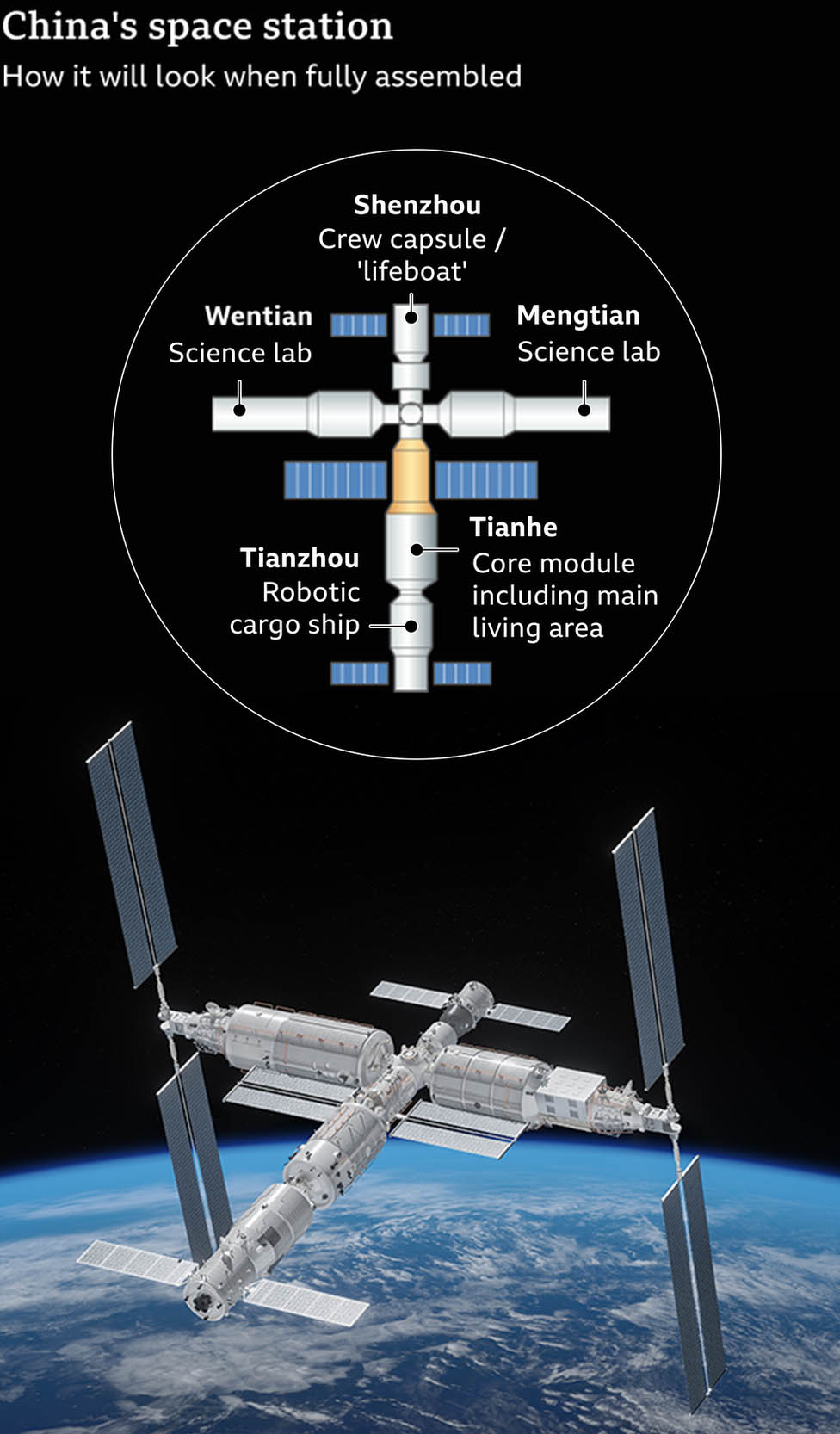China’s Tiangong Space Station | 11 Jun 2022
For Prelims: Tiangong Space Station, Earth observatory satellites of India, Polar satellites, International Space Station
For Mains: Contribution of technological innovation in space programmes, Space Technology
Why in News?
Recently, China’s strategically significant space station project entered the final phase as three astronauts entered the orbiting module of the Tiangong Space Station.
- They were launched into the designated orbit by the Shenzhou-14 spacecraft.
- Shenzhou-1 to 4 space flights were unmanned spaceflight missions.
- Shenzhou-5 to 14 spaceflights are manned spaceflight missions.
- A space station is a spacecraft capable of supporting crew members, designed to remain in space for an extended period of time and for other spacecraft to dock.
What is the Tiangong Space Station?
- The Tiangong space station is a Chinese space station being built in low Earth orbit between 340 and 450 kilometers above the earth.
- It is part of China Manned Space Program and is the country's first long-term space station.
- China is going to operationalize its new Tiangong multi-module space station for at least ten years.
- China launched an unmanned module named "Tianhe", or "Harmony of the Heavens" for its permanent space station in 2021 that it plans to complete by the end of 2022.
- Tianhe core module is the first module to launch the Tiangong space station module.
What is the China Manned Space Programme?
- The Chinese government decided to launch a human space programme using a "three-step" method in 1992 which is known as the China Manned Space Program.
- The 1st step: To launch manned spaceships to master basic human space technologies.
- The 2nd step: To launch Space Labs to make technological breakthrough in R&D, and accommodation of long-term man-tended utilization on a modest scale
- The 3rd step: To construct China’s Space Station to accommodate long-term man-tended utilization on a large scale
- It is managed by the China Manned Space Agency.
What is the Importance of this Launch for China?
- China is only the third country in history to have put both astronauts into space and to build a space station, after the Russia and the US.
- The China Space Station (CSS) is also expected to be a competitor to the International Space Stations.
- The International Space Station (ISS) Is a collaborative project of several countries.
- The ISS is the most complex international scientific and engineering project in history and the largest structure humans have ever put into space.
What are India's Space Station Programmes?
- About:
- India is planning to launch its own space station by 2030, joining the league of US, Russia, and China to an elite space club.
- The Indian space station will be much smaller (mass of 20 tonnes) than the International Space Station and will be used for carrying out microgravity experiments (not for space tourism).
- Preliminary plan for the space station is to accommodate astronauts for up to 20 days in space, and the project will be an extension of the Gaganyaan mission.
- It will orbit Earth at an altitude of around 400 km.
- ISRO (Indian Space Research Organization) is working on a space docking experiment (Spandex), a technology that is crucial for making the space station functional.
- Space docking is a technology that allows transferring humans from one spacecraft to another.
- Significance:
- Space stations are essential for collecting meaningful scientific data, especially for biological experiments.
- Provide platforms for greater number and length of scientific studies than available on other space vehicles. (as Gaganyaan will take humans and experiments in microgravity for a few days only).
- Space stations are used to study the effects of long-term space flight on the human body.

